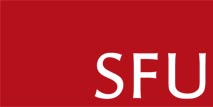News and updates
Jan 3, 2018: Happy New Year and welcome to IAT 355.
Important: In this course we focus on the principles and practice of visual analytics embodied in problem-based learning. This will really benefit from both your active participation and your feedback thoughout the class.
General
Information
This course will provide an introduction to the basic techniques of Visual Analytics: the science of analytical reasoning supported by highly interactive visual interfaces. Human-centred analytical reasoning - the ways in which we derive discovery and meaning from observing complex collections of data - involves the formulation and validation of hypotheses; the discovery of trends and outliers; and the generation of new questions. Visualization and visual analytics exploit our most powerful capability: visual thinking. We will study techniques and algorithms for creating effective data visualization based on principles from graphic design, visual art, perceptual psychology, and cognitive science. Topics include perception, Information Visualization, data-driven thinking and Information Analysis.
The goal of this class is to
provide students with a basic grounding in techniques that
can be used to design and implement visualization workspaces
for complex information and the processes of visual
analytics, as well as an introduction to theories that help
inform the design of such systems. Students will use
programming tools to develop interactive computer graphics
and information visualizations, typically using javascript
and visualization libraries such as d3 and gephi.
Example cases will be drawn from real-world examples and
students are encouraged to engage with external problems and
stakeholders for their final projects.
- facilitate communication between yourself as a Visual Analyst and other members of a software development team.
- Work with programmers to implement concepts and strategies for making design decisions.
- prototype tools, techniques, and ideas for Visual Analytics.
Texts
There are two required texts for the class, both available as ebooks in the library
- Visualization Analysis and Design, Tamara Munzner. This is available as an ebook in the library.
- Colin Ware, Visual Thinking for Design: This is also available as an ebook in the library.
We will also use the Tableau™ visualization package: you can install it on your laptops or home machines. You download it from the Tableau website for installation on your personal machine: instructions are on the Resources page. Tableau's data visualization software is provided through the Tableau for Students program.
Other resources will be posted on the
Resources page as needed.
Submissions, announcements, and discussions
will use the course Canvas page.
Disclaimer
The professor reserves the right to modify any of these plans as needed during the course of the class.

